Didn’t Plant Any Strawberry Plants?
Here at Strawberry Plants .org, we would like to see everyone with half of a square foot of dirt plant their own strawberry plants and reap their own fresh-picked strawberry harvest. But, life is busy, and most people will end up buying their strawberries off the shelf at a grocery store. This is post is a guide for picking strawberries off the shelf and will help you make the most of your strawberry purchases!
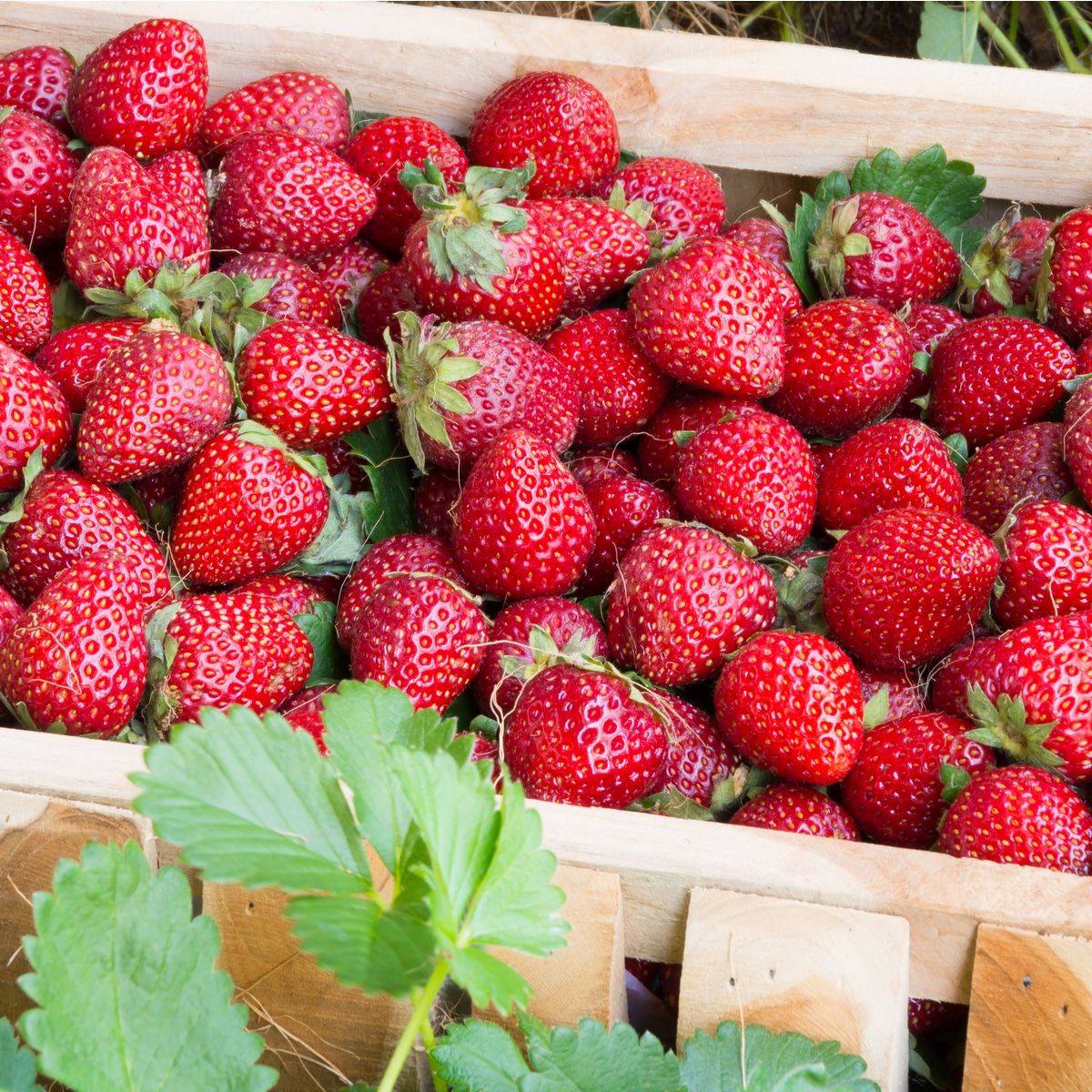
Jump to:
Strawberries Are on Strawberry Plants before They Reach the Shelf!
When purchasing strawberries at a grocery store, it is important to understand from where the strawberries came. They were, of course, most likely grown on strawberry plants in some field somewhere. It is unlikely that the strawberry variety (the specific cultivar) will be listed on the packaging. It is also unlikely that all of the methods used to grow the strawberries will be listed anywhere. That’s too bad.
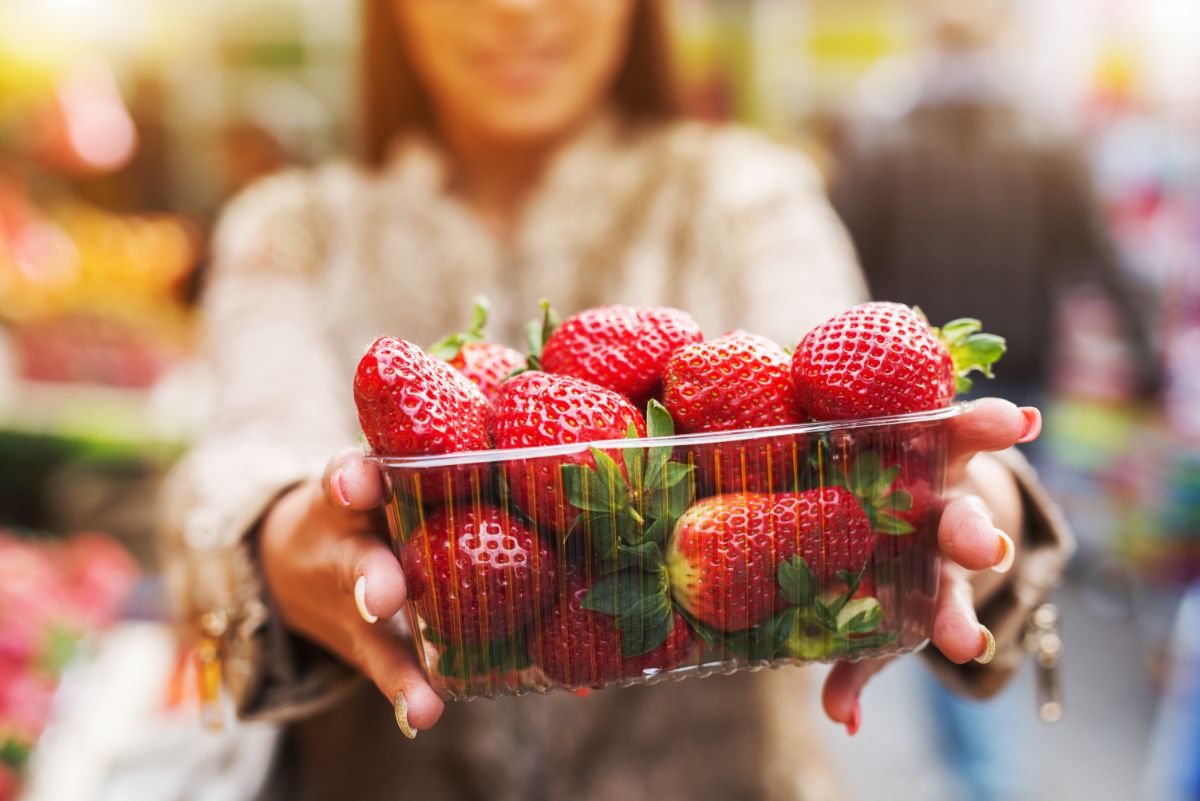
Knowing the practices used to grow the strawberry plants and which of the Strawberry Varieties was grown can give an educated shopper a good idea as to the taste and quality of the strawberries on the shelf. Additionally, the time of year, soil conditions, and weather conditions can also affect taste and strawberry quality.
For example, if you are buying fresh strawberries that were grown in California during the short-day season (winter), it is likely that you are either getting Camarosa strawberries, Ventana strawberries, or one of the newer cultivars, Benicia or Mojave strawberries. Similarly, you can expect to get differing strawberry flavors and nuances depending on when and where you buy strawberries. Usually, a farmer will be able to tell you exactly which cultivar of strawberry plants he planted to produce his strawberries.
Just remember, not all strawberries are created equally. Buying similar-looking strawberries in the same packaging from the same location at two different times during the year will almost certainly mean you are buying different strawberry varieties that will have differing flavor profiles. If you really want to find additional information about the strawberries you purchase, you can run the numbers through this Strawberry UPC Codes database.
How Clean Are Strawberries?
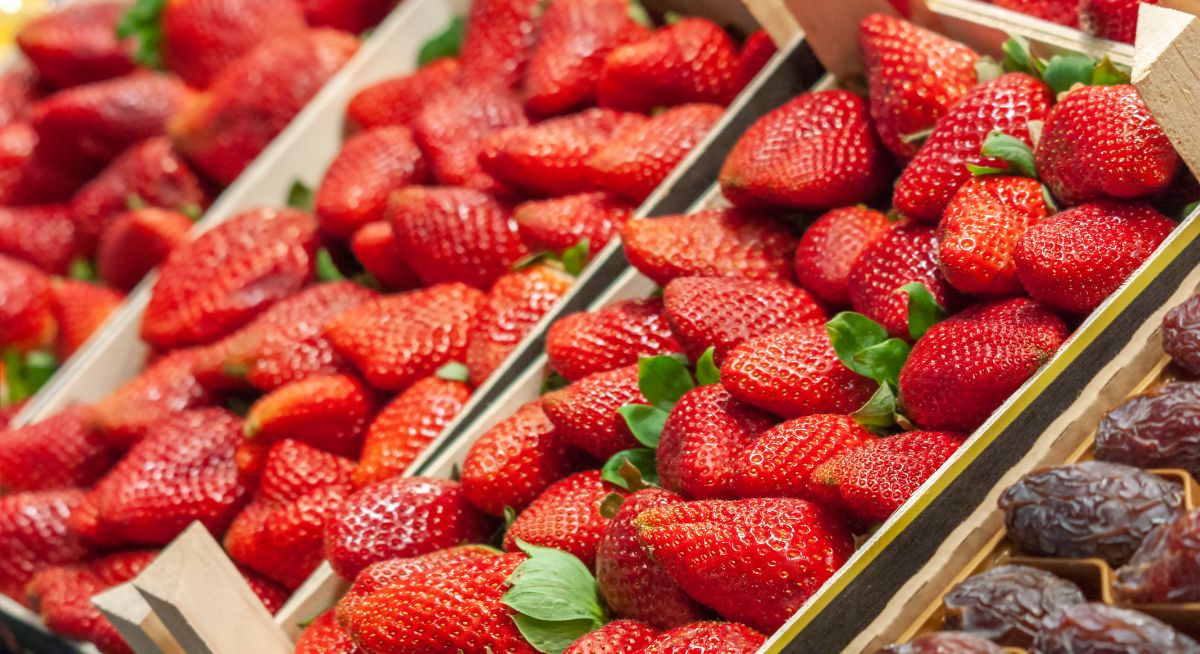
The Environmental Working Group compiles testing results for many common fruits and vegetables annually. This data is then used to make a list of the 15 cleanest and 12 dirtiest ones. Sadly, strawberries prove to be quite contaminated virtually every year. They seem to have a permanent spot in the “Dirty Dozen” list. In fact, a single sample was contaminated by 13 different pesticides. Overall, 53 different pesticides were discovered on or in the strawberries we all love to eat. For more details, visit the EWG.
Consuming pesticides is not recommended. Doing so has been linked to nervous system problems, disordered hormonal balance, irritation of the skin, lungs, and eyes.
So, how clean are strawberries? Usually not very, if you buy them at the store. Even though they are usually more expensive, reaching for the organically grown strawberries will likely be better for long-term health. That is just something to consider when picking strawberries off the shelf.
Strawberry Freshness Matters
Strawberries have a notoriously short shelf life. If you buy strawberries, you will need to use them quickly or they will become moldy and start to decompose. Some grocers may keep old strawberries that don’t sell well on the shelf longer than they should. If there is any doubt as to the freshness of the berries, steer clear.
When Is a Strawberry Ripe?
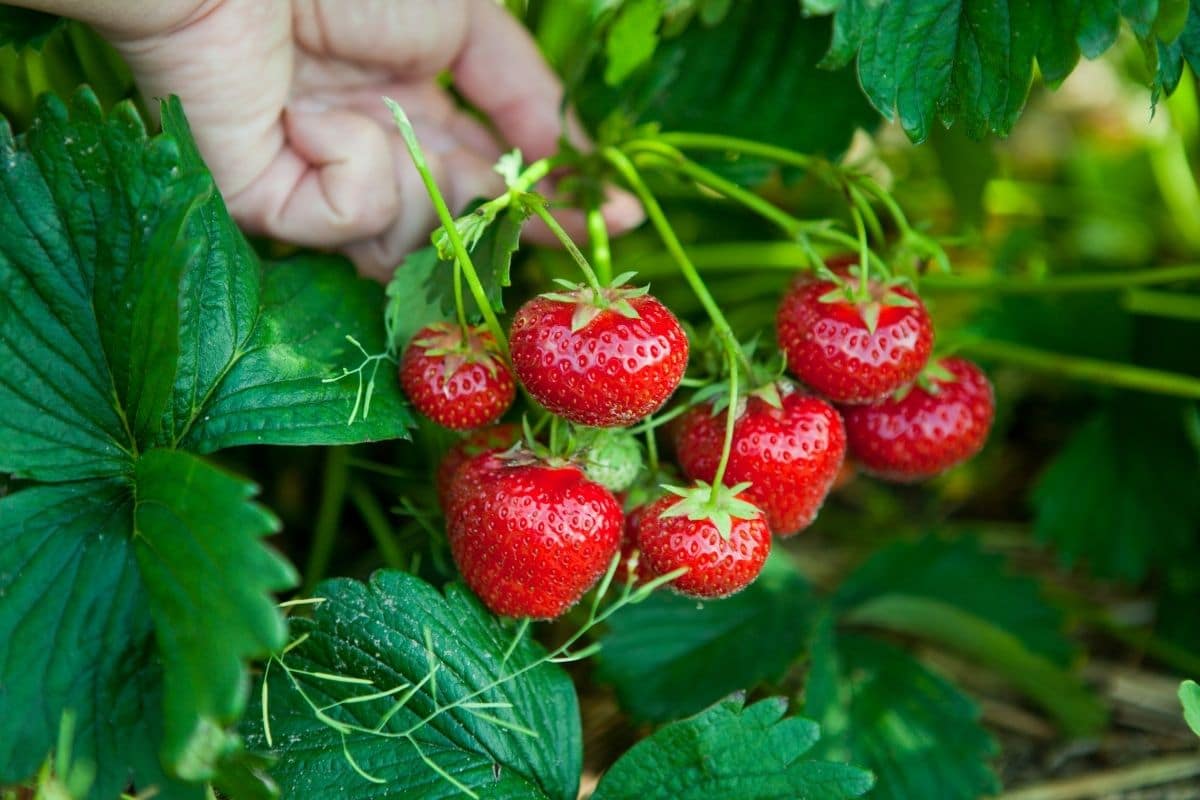
Strawberries are ripe when the entire strawberry is evenly red. Ripe strawberries will have a higher sugar content and better overall taste profile than immature strawberries. Usually, you won’t find any grossly unripe or green strawberries in a package purchased from a grocery store. The commercial growers have an evaluation system that does a pretty good job of culling the unfit strawberries before they get packaged.
But, do examine the tips of the strawberries. The strawberries should be red all the way to the very tip of each berry. If the very tip of a strawberry is white or greenish, it means the strawberry was picked slightly before it was ready and will likely be slightly (or not so slightly) tart.
Remember that strawberries do not ripen once picked like tomatoes and some other fruits and vegetables do. So, if it is unripe when picked and packaged, it will be unripe when you eat it. Look for the containers that have the most evenly colored strawberries and the fewest (if any) white tips. They will taste better and have a higher nutritional value compared to the unripe ones.
Additionally, if you do see a green strawberry or obviously small, disfigured, or suspect strawberry, either get a different container or steer clear of the strawberries of that brand altogether. If a commercial operation fails to catch and cull such undesirable strawberries, their quality control mechanisms have malfunctioned. It is best to avoid produce from companies with malfunctioning quality control.
Are the Strawberries Whole?
Any decomposition likely means that the strawberries have exceeded their shelf life and have “expired.” If you see mold in the container or on strawberries, don’t buy it. Some people claim that mold can do horrendous things to you. Whether or not that is true, I doubt eating mold will work wonders for your health. If you see any visible signs of mold in a package, it is likely that mold spores have already spread throughout, so avoid that batch altogether.
Additionally, inspect the strawberries to ensure that they have their green caps and are generally whole. If the caps have been removed or torn off, or the berries are damaged, they are likely losing their nutritional benefits as you inspect them. When the cells of the strawberry are torn or damaged, an enzyme, ascorbic acid oxidase, is activated which then begins destroying the Vitamin C in the strawberry. Of course, this won’t hurt you. But, if you have the option, why not select strawberries that have their full nutritional component intact?
Strawberry Buying Guide: Conclusion
Strawberries are very nutritious in their natural state. In fact, some exciting new research indicates that one of the compounds in strawberries may even help prevent cancer. So, if you can’t bring yourself to buy a few strawberry plants and grow your own strawberries, use this guide to get the most for your money. In summary:
1. Realize environmental factors affect taste and quality of strawberries
2. Buy organic, if you can afford it
3. Ensure the strawberries are fresh
4. Verify ripeness and consistent quality of the fruits
5. Look for damaged or moldy strawberries
6. Congratulate yourself for knowing how to buy strawberries in a grocery store and buy the winning carton!
Then, once you have taken the prize back home for consumption, ponder whether or not you can grow your own strawberries next year! The information on this website will help you do it successfully, if you choose to jump into such an endeavor.






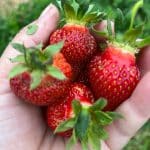


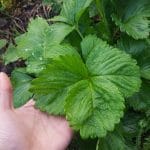
chris lockyer says
hi 🙂
Victor Kleinman says
I want to complement your staff for answering the question without a lot of other nonsense which I have no need for. My question was what temperature do you store strawberries in your home refrigerator. Yours is the only site that start it off with the answer and gave other things which were OK but at least it gave me the answer that I was looking for. I pride myself on being able to store many Food items for a period of time and having them as good until they’re not of course as when I purchased them some need to be wrapped in paper towels and some need to be tested so I need to be there but strawberries are difficult. Thank you again